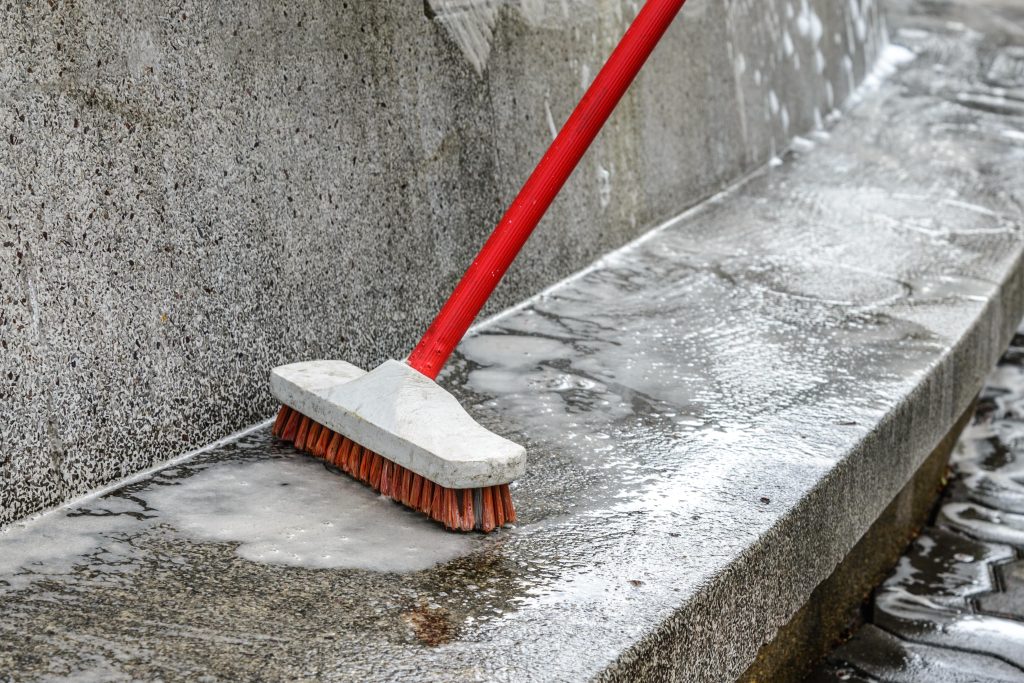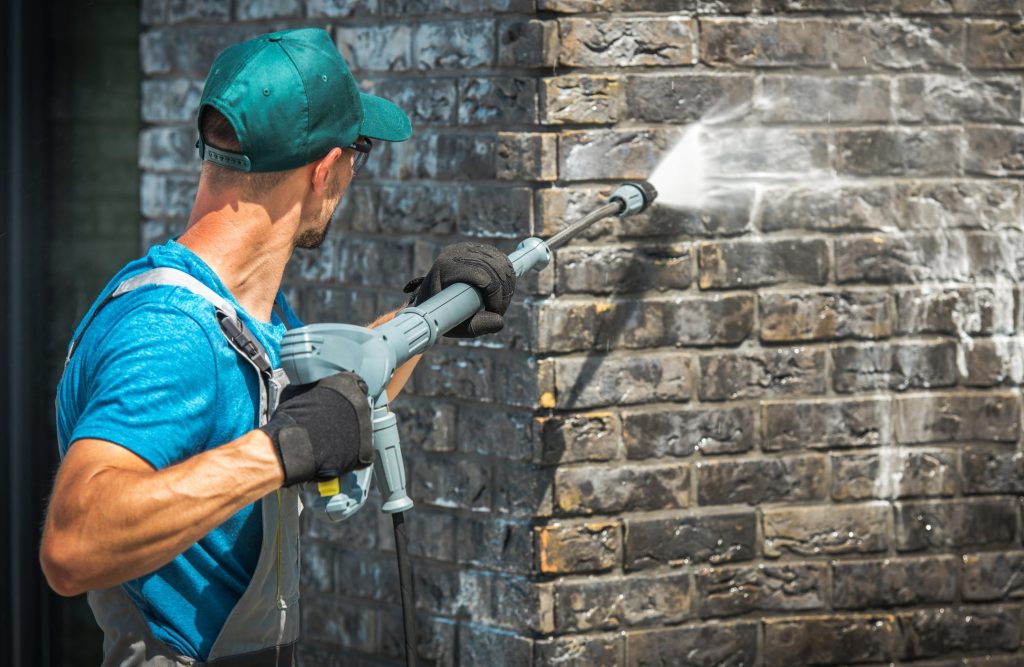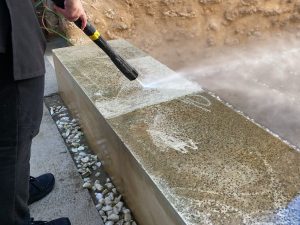Old stone often loses its natural colour and texture after years of exposure to pollution, weather and biological growth. Cleaning can make a dramatic difference – but only when done with care. The right methods will lift surface grime and staining without harming the stone underneath.
By using gentle, heritage-safe techniques like DOFF steam cleaning or TORC abrasive cleaning, you can remove years of dirt while preserving the stone’s surface. These systems are designed for use on listed buildings and sensitive masonry, so they clean without stripping, scratching, or causing long-term damage. In the hands of a specialist – like The Yorkshire Lime Company – even the most weathered stone can look fresh and sharp again.

Will Stone Cleaning Damage Heritage Stonework?
Stone cleaning can damage heritage masonry if the wrong tools or products are used. High-pressure washing, harsh chemicals, or abrasive methods can all erode the surface and weaken the structure.
However, with the right approach, it’s completely safe:
- DOFF steam cleaning uses high-temperature water at low pressure to clean stone gently.
- TORC cleaning combines low-pressure air, water and granulate to remove carbon, paint or algae.
- Poultice applications lift out deeper stains without scrubbing.
- Manual cleaning uses hand tools and natural bristle brushes for delicate or decorative stonework.
- Test patches are always used first to find the safest, most effective method.
The goal is always preservation. When done correctly, cleaning will enhance the appearance of heritage stone without affecting its condition or historic value. For more information on stone cleaning for heritage stonework, contact the team at The Yorkshire Lime Company now – we provide a range of services to preserve your heritage and listed buildings in Yorkshire.
When Might You Need To Restore Your Stone?
Cleaning can bring stonework back to life, but it sometimes reveals deeper issues. If your building looks uneven, damaged, or still tired after cleaning, it may need restoration.
Grime can hide cracks, spalled surfaces or cement-based repairs that don’t suit the original material. Once removed, the true condition of the stone becomes clearer – and so do any problems that need fixing. This is particularly common on older properties that have weathered decades of exposure or poor maintenance.
If you notice flaking, missing corners or weakened joints, restoration is likely required. Skilled heritage masons can rebuild these areas using lime mortars or matching stone, helping return the building to its original appearance and integrity.
What Are the Signs That Stone Cleaning Is Needed?
Natural stone weathers over time, but some changes signal it’s time for action. If staining, discolouration or green growth dominate the surface, your masonry may benefit from cleaning.
Pollution, algae and soot often create dark patches that trap moisture and make the surface more vulnerable. In other cases, biological growth like lichen or moss forms in damp or shaded corners – a clear sign that the stone can’t breathe properly.
Coatings such as paint or sealants may also break down, creating a patchy, dull look. Cleaning removes these layers to restore the stone’s colour and detail – often revealing more than you realised was there.
What Types of Stone Are Common Across Yorkshire?
Yorkshire has a rich variety of native stone, each with its own needs when it comes to cleaning.
Magnesian Limestone is found across West and South Yorkshire. It’s soft and pale, and needs gentle handling to avoid surface loss.
Yorkshire Gritstone is hard and durable. It can withstand more robust cleaning, but still requires care to avoid changing its texture.
Carboniferous Sandstone appears across many historic terraces and churches. It often suffers from black crusts caused by pollution and benefits from DOFF or TORC cleaning.
Understanding your stone type is crucial. The wrong method could strip its surface or create more damage over time. That’s why every stone cleaning project should start with a site visit and test patch.
How Does Stone Cleaning Support Long-Term Preservation?
Stone cleaning isn’t just cosmetic – it’s a preventative measure that supports the health of a building. Removing grime helps stone breathe, dry, and perform as it should.
When biological growth and pollutants are cleared away, moisture can escape more easily. This reduces internal stress caused by salt crystals or frost, which are common causes of decay on heritage masonry.
It also exposes underlying issues that might otherwise go unnoticed. Cracks, poor previous repairs or movement often remain hidden until the surface is cleaned. By addressing them early, you avoid further deterioration and protect the long-term structure.

What Are the Risks of Inappropriate Stone Cleaning?
Done the wrong way, stone cleaning can do more harm than good. That’s why understanding the stone type and condition is essential before any work begins.
Jet washing, for example, can force water into the stone, triggering cracks or frost damage later. Strong chemical cleaners might react badly with minerals in limestone or sandstone, causing staining or breakdown of the surface.
Even abrasive methods can cause lasting damage when used without care – particularly on soft or decorative stone. A gentle, informed approach is always safer.
Before any work starts, a conservation-focused contractor will carry out test patches and condition reports to make sure your stone is cleaned safely and correctly.
Contact The Yorkshire Lime Company For More Information
If you’re planning to clean or restore stone on your property, speak to The Yorkshire Lime Company. We provide sensitive stone cleaning in Yorkshire using heritage-safe systems that protect both the look and structure of your building. From sandstone cottages to limestone churches, we understand the local materials and how best to care for them.
Get in touch to book a site visit or request a test clean. We’ll help you understand the condition of your stone and recommend the right solution to bring it back to life – safely, and with care.





